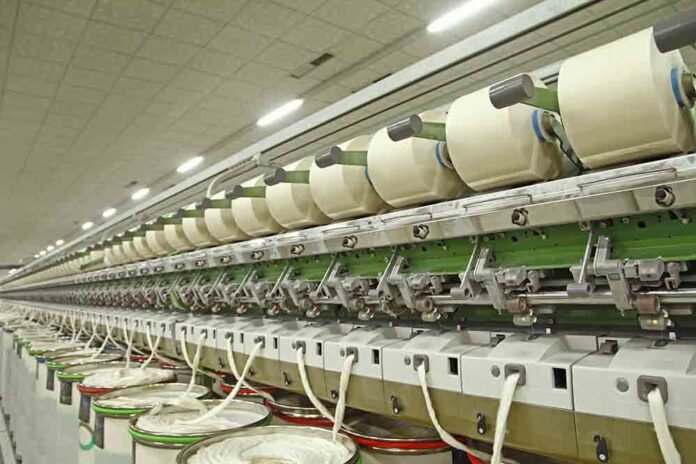All is not good in the textile sector which saw an earning dip of 24 percent mainly because of high finance costs, and energy. In a recent analysis of Pakistan’s textile composite sector, (which is considered a very critical part of the economy) the industry encountered some significant challenges in FY23. The analysis is based on a sample of 22 companies, collectively representing 81 percent of the textile sector’s total market capitalization.
Earnings of the textile sector faced headwinds in the financial year 2022-23 mainly owing to higher financing costs, expensive cotton, and increasing energy tariffs. The findings came following the filtration of companies based on a minimum market capitalization criterion of Rs1 billion, Topline Research said in a report.
A notable policy change worth mentioning was the discontinuation of concessionary energy tariffs for the textile sector, effective from March 1, 2023, due to conditions of the International Monetary Fund’s (IMF) loan program. This policy shift has increased the cost of production.
Local cotton prices also increased by 9 percent, averaging Rs19,070 per maund during FY23. The price hike was a consequence of adverse weather conditions, including heavy rainfall and flooding that destroyed cotton crops in the preceding year.
Other income of the sample companies showed a significant year-on-year (YoY) increase of 47%, mainly due to exchange rate gains and a rise in interest income. However, finance costs surged 109% YoY during FY23, primarily because of higher interest rates and increased borrowing within the sector.
According to the report, Pakistan’s textile sector posted a noteworthy decline of 24% in profits, which fell to Rs72.6 billion in FY23. The decline in earnings could be primarily attributed to factors like the increasing cost of financing, high costs of cotton and energy, and the global economic slowdown.
Despite challenges, sales for listed textile firms rose 15% YoY, reaching Rs1,150 billion in FY23. However, when converted into dollars, the sector saw a decline of 17%, mainly due to the reduction in textile exports.
In FY23, Pakistan’s textile exports amounted to $16.5 billion, which reflected a 15 percent YoY decrease, though in rupee terms, they rose 18 percent. The decline in export revenues was primarily driven by the global economic slowdown and the recession in Europe.
Gross margins of textile companies recorded a reduction from 19 percent in FY22 to 17 percent in FY23, which could be attributed to high energy and cotton prices, both of which constituted a significant portion of the costs incurred by textile companies.
The effective tax rate for the textile industry came in at 20 percent in the year under review, compared to 16 percent in FY22. Interloop Limited, Nishat Mills, and Feroze1888 Mills emerged as the top three contributors to the profits of the textile composite sector.
There is cautious optimism about an increase in textile exports, albeit below the government’s estimate of $25 billion for FY24. However, in the first two months (July-August) of FY24, textile exports have already declined by 10 percent YoY.
Cotton production is expected to rebound as favorable weather conditions have led to a better crop in the country. As of September 30, 2023, cotton arrivals increased by a substantial 71 percent YoY to five million bales, compared to three million bales in the previous year.
Despite such positive developments, the textile industry is grappling with elevated energy costs and the shortage of gas, which remain significant challenges.



